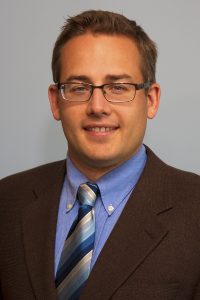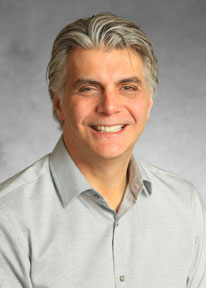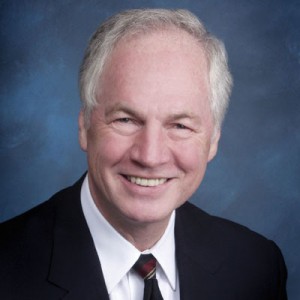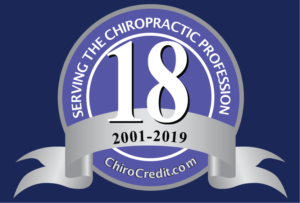 In this podcast episode, André Bussières DC, PhD and I discuss topics such as: research utilization and knowledge translation in chiropractic (the Know-Do gap) as well as professional behaviour change, and the Canadian Chiropractic Guideline Initiative.
In this podcast episode, André Bussières DC, PhD and I discuss topics such as: research utilization and knowledge translation in chiropractic (the Know-Do gap) as well as professional behaviour change, and the Canadian Chiropractic Guideline Initiative.
Dr. André Bussières is an Assistant Professor at the School of Physical and Occupational Therapy and an Associate Member, Department of Epidemiology, Biostatistics and Occupational Health at McGill University. He is a professor in the Chiropractic Department at l’Université du Québec à Trois-Rivières. He has clinical training in nursing (U. Montreal, 1987) and chiropractic (CMCC, 1991), and completed an MSc in Kinesiology (UQTR, 2008), and a PhD in Population Health (U. Ottawa, 2012). He was in private practice between 1993 and 2007. He is a Fellow of the College of Chiropractic Scientists (Canada), and serves as an Associate Editor of the Journal of the Canadian Chiropractic Association and BMC Health Service Research, and is an Editorial Board member of Chiropractic & Manual Therapies.
He holds a Canadian Chiropractic Research Foundation (CCRF) Professorship in Rehabilitation Epidemiology (McGill University) and leads the Canadian Chiropractic Guideline Initiative. His research interest focuses on clinical practice guidelines development and uptake to improve patient care and health outcome, knowledge synthesis, implementation research and professional behaviour change.
Dr. Bussières Appointments:
- Assistant Professor, McGill’s School of Physical and Occupational Therapy
- Cross-appointment: Department of Epidemiology and Biostatistics
- Professeur (régulier), Département Chiropratique, Université du Québec à Trois-Rivières (UQTR)
Education: BSc (Nursing) Université de Montréal; DC, Canadian Memorial Chiropractic College, Toronto; Fellowship in Clinical Sciences, Toronto; MSc (Kinesiology) Université du Québec à Trois-Rivières; PhD (Population Health) University of Ottawa.
Research Interests:
Dr. Bussières’ research focuses on clinical practice guideline development and uptake to improve process of care and patient outcome, knowledge synthesis, implementation research and professional behaviour change, and musculoskeletal disorders.
Dr. Bussières website at McGill University:
https://www.mcgill.ca/spot/our-faculty/bussieres
Canadian Chiropractic Guideline Initiative:
http://chiroguidelines.org
Links to articles by Dr. Bussières mentioned in the podcast:
| 1. | Evidence-based practice, research utilization, and knowledge translation in chiropractic: a scoping review. |
| Bussières AE, Al Zoubi F, Stuber K, French SD, Boruff J, Corrigan J, Thomas A. | |
| BMC Complement Altern Med. 2016 Jul 13;16:216. doi: 10.1186/s12906-016-1175-0. Review. | |
| PMID: 27412625 [PubMed – indexed for MEDLINE] Free PMC Article | |
| Similar articles |
| 2. | Self-reported attitudes, skills and use of evidence-based practice among Canadian doctors of chiropractic: a national survey. |
| Bussières AE, Terhorst L, Leach M, Stuber K, Evans R, Schneider MJ. | |
| J Can Chiropr Assoc. 2015 Dec;59(4):332-48. | |
| PMID: 26816412 [PubMed] Free PMC Article | |
| Similar articles |
| 3. | Fast tracking the design of theory-based KT interventions through a consensus process. |
| Bussières AE, Al Zoubi F, Quon JA, Ahmed S, Thomas A, Stuber K, Sajko S, French S; Members of Canadian Chiropractic Guideline Initiative.. | |
| Implement Sci. 2015 Feb 11;10:18. doi: 10.1186/s13012-015-0213-5. | |
| PMID: 25880218 [PubMed – indexed for MEDLINE] Free PMC Article | |
| Similar articles |
| 4. | The Canadian Chiropractic Guideline Initiative: progress to date. |
| Bussières A. | |
| J Can Chiropr Assoc. 2014 Sep;58(3):215-9. No abstract available. | |
| PMID: 25202149 [PubMed] Free PMC Article | |
| Similar articles |

 William Weeks MD, PhD, MBA and I discuss topics such as: how doctors of chiropractic supply health care services, how patients use such services, and how best to integrate chiropractic with other health care providers; health care delivery science; value in spine care and; opioid overuse in back pain. Dr. Weeks is Professor of Psychiatry and of Community and Family Medicine at The Geisel School of Medicine at Dartmouth. There, he works at The Dartmouth Institute for Health Policy and Clinical Practice as a Senior Research Scientist, where he teaches in Masters programs and conducts research on health economics, healthcare value, the complementary and alternative medicine market, and geographic variation in health services utilization in France. Dr. Weeks has published over 150 peer-reviewed manuscripts examining economic and business aspects of health care services utilization and delivery, physicians’ return on educational investment, health care delivery science, and healthcare value. He received his MD from the University of Texas Medical Branch at Galveston, his MBA from Columbia University, and his PhD in Economics from the Aix-Marseille School of Economics and Management. Dr. Weeks has been honored with the 2009 National Rural Health Association Outstanding Researcher Award and the 2016 Jerome F McAndrews award for excellence in research from the National Chiropractic Mutual Insurance Corporation Group. During 2016, Dr. Weeks holds the Fulbright-Toqueville Distinguished Chair at Aix-Marseille University.
William Weeks MD, PhD, MBA and I discuss topics such as: how doctors of chiropractic supply health care services, how patients use such services, and how best to integrate chiropractic with other health care providers; health care delivery science; value in spine care and; opioid overuse in back pain. Dr. Weeks is Professor of Psychiatry and of Community and Family Medicine at The Geisel School of Medicine at Dartmouth. There, he works at The Dartmouth Institute for Health Policy and Clinical Practice as a Senior Research Scientist, where he teaches in Masters programs and conducts research on health economics, healthcare value, the complementary and alternative medicine market, and geographic variation in health services utilization in France. Dr. Weeks has published over 150 peer-reviewed manuscripts examining economic and business aspects of health care services utilization and delivery, physicians’ return on educational investment, health care delivery science, and healthcare value. He received his MD from the University of Texas Medical Branch at Galveston, his MBA from Columbia University, and his PhD in Economics from the Aix-Marseille School of Economics and Management. Dr. Weeks has been honored with the 2009 National Rural Health Association Outstanding Researcher Award and the 2016 Jerome F McAndrews award for excellence in research from the National Chiropractic Mutual Insurance Corporation Group. During 2016, Dr. Weeks holds the Fulbright-Toqueville Distinguished Chair at Aix-Marseille University. Dr. Hartvigsen and I discuss some important issues facing the profession including: 1) What is Evidence Based Practice?; 2) How do we build chiropractic’s academic capacity (and what are the barriers)?; 3) The Chiropractic Profession in the Mainstream; 4) How can we get the research out to chiropractors and the public?; 5) Musculoskeletal health in the context of general health; 6) The current situation in Australia (pediatric chiropractic).
Dr. Hartvigsen and I discuss some important issues facing the profession including: 1) What is Evidence Based Practice?; 2) How do we build chiropractic’s academic capacity (and what are the barriers)?; 3) The Chiropractic Profession in the Mainstream; 4) How can we get the research out to chiropractors and the public?; 5) Musculoskeletal health in the context of general health; 6) The current situation in Australia (pediatric chiropractic). Dr. Kent Stuber discusses his research interests, his role as editor of the Journal of the Canadian Chiropractic Association and how chiropractors can get involved in research. Kent Stuber has been in practice in Calgary, Alberta, Canada for nearly 14 years. He did his chiropractic training at CMCC. He completed a Master of Science degree in Health and Social Care Research from the University of Sheffield in 2008. He is currently a MPhil/PhD student at the University of South Wales, studying patient-centeredness in chiropractic.
Dr. Kent Stuber discusses his research interests, his role as editor of the Journal of the Canadian Chiropractic Association and how chiropractors can get involved in research. Kent Stuber has been in practice in Calgary, Alberta, Canada for nearly 14 years. He did his chiropractic training at CMCC. He completed a Master of Science degree in Health and Social Care Research from the University of Sheffield in 2008. He is currently a MPhil/PhD student at the University of South Wales, studying patient-centeredness in chiropractic.
 In this episode Cheryl Hawk, DC, PhD, CHES discusses chiropractic maintenance vs. wellness care, various chiropractic guidelines on low back pain, health promotion and pediatric care as well as her two new books. Dr. Cheryl Hawk is an author of over 100 publications in peer-reviewed scientific journals. She has designed and taught courses on wellness and health promotion to health professions students and in post-graduate education. She has also collaborated on the design and implementation of an online wellness certification program for health professionals, with Will Evans, DC, PhD, MCHES, and Michael Perko, PhD, CHES, FAAHE, offered by the National Wellness Institute. She received her Doctor of Chiropractic degree in 1976 from the National University of Health Sciences and practiced full-time for 12 years. In 1991, she earned a PhD in Preventive Medicine from the University of Iowa and also became a Certified Health Education Specialist (CHES). She is the author, with Will Evans, DC, PhD, MCHES, of Health Promotion and Wellness: An Evidence-Based Guide to Clinical Preventive Services. She is currently co-chair of the Research Working Group of the Academic Consortium for Complementary and Alternative Health Care. She has been named “Researcher of the Year” by both the American Chiropractic Association (2003) and the Foundation for Chiropractic Education and Research (2005). Her areas of interest are health promotion and prevention, practice-based research and health services research.
In this episode Cheryl Hawk, DC, PhD, CHES discusses chiropractic maintenance vs. wellness care, various chiropractic guidelines on low back pain, health promotion and pediatric care as well as her two new books. Dr. Cheryl Hawk is an author of over 100 publications in peer-reviewed scientific journals. She has designed and taught courses on wellness and health promotion to health professions students and in post-graduate education. She has also collaborated on the design and implementation of an online wellness certification program for health professionals, with Will Evans, DC, PhD, MCHES, and Michael Perko, PhD, CHES, FAAHE, offered by the National Wellness Institute. She received her Doctor of Chiropractic degree in 1976 from the National University of Health Sciences and practiced full-time for 12 years. In 1991, she earned a PhD in Preventive Medicine from the University of Iowa and also became a Certified Health Education Specialist (CHES). She is the author, with Will Evans, DC, PhD, MCHES, of Health Promotion and Wellness: An Evidence-Based Guide to Clinical Preventive Services. She is currently co-chair of the Research Working Group of the Academic Consortium for Complementary and Alternative Health Care. She has been named “Researcher of the Year” by both the American Chiropractic Association (2003) and the Foundation for Chiropractic Education and Research (2005). Her areas of interest are health promotion and prevention, practice-based research and health services research.
 In this episode, it is my great privilege to interview Scott Haldeman, DC, PhD, MD. Dr. Haldeman is a pioneer of chiropractic science and a world leader in spine research. Dr. Haldeman holds the positions of Adjunct Professor, Department of Epidemiology, School of Public Health, University of California, Los Angeles, and Clinical Professor, Department of Neurology, University of California, Irvine.
In this episode, it is my great privilege to interview Scott Haldeman, DC, PhD, MD. Dr. Haldeman is a pioneer of chiropractic science and a world leader in spine research. Dr. Haldeman holds the positions of Adjunct Professor, Department of Epidemiology, School of Public Health, University of California, Los Angeles, and Clinical Professor, Department of Neurology, University of California, Irvine.



